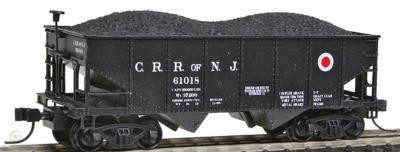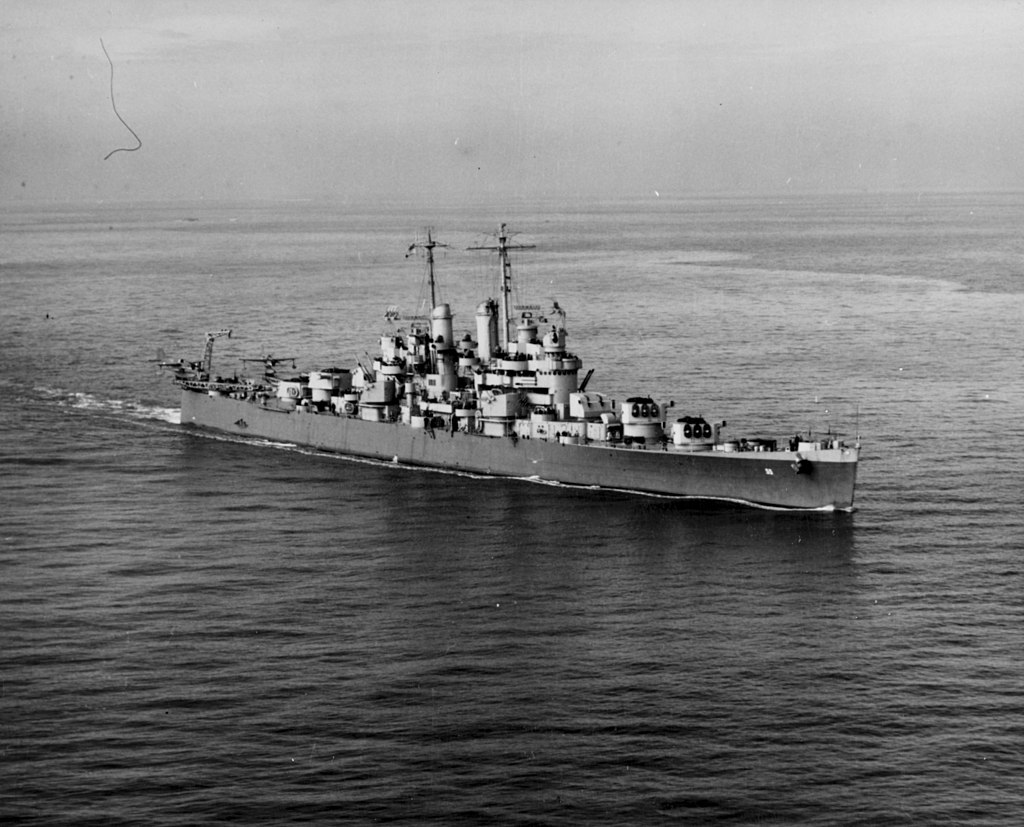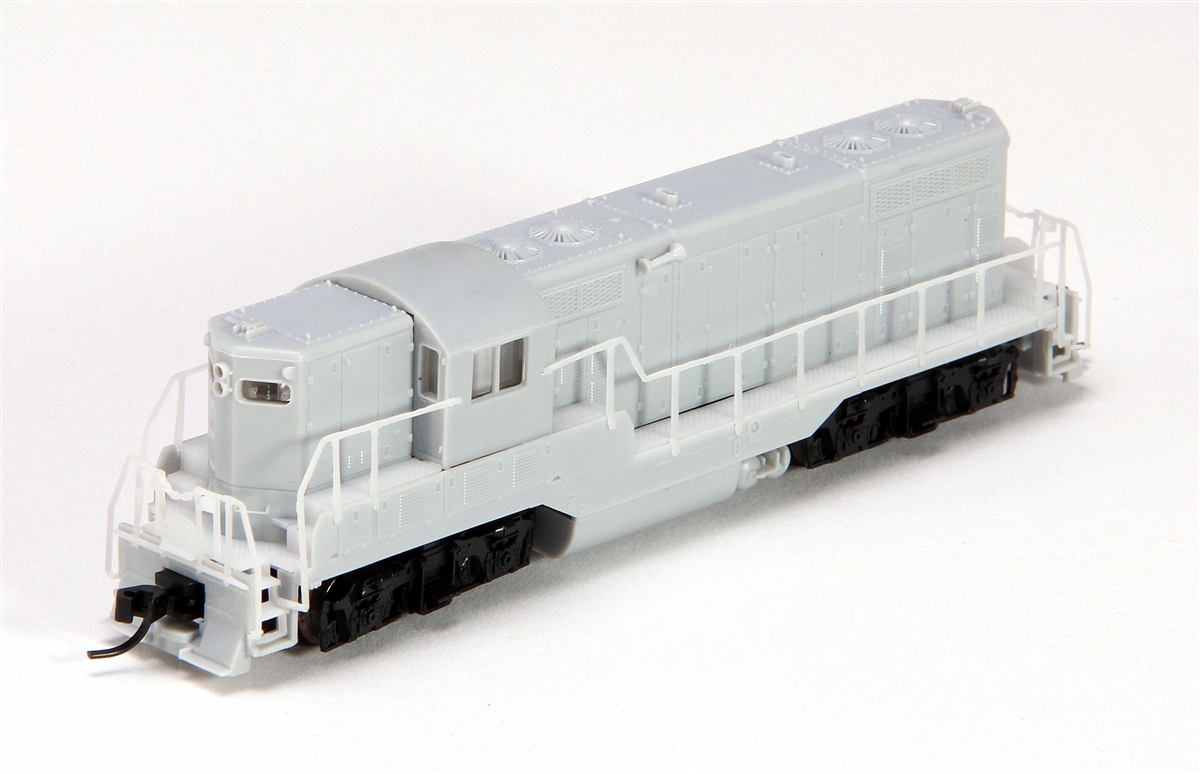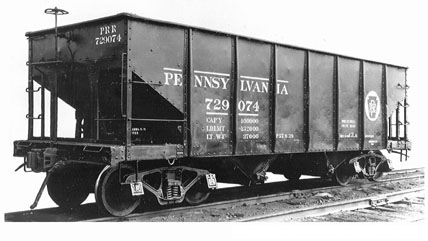Model Information: Bowser originally produced these models in kit form. However, all releases since 2007 or so are in Ready-To-Run (RTR) form. The kit form it included: a one piece plastic molded body, underframe, brake wheel, air reservoir, brake cylinder, control valve, X2f and McHenry KS couplers, plastic trucks/wheels and steel car weights.
This model comes in two variations: a vertical and a horizontal brake wheel. The ones with vertical brake wheels are delicate, so handle them with care. The plastic loads that come with the cars are low-to-mid grade quality and not up to the standards of the rest of this quite excellent car. Recent releases use high grade (MTL clone) body-mounted couplers and blackened metal wheels and are easily a nice value for their relatively low cost.
This model comes in two variations: a vertical and a horizontal brake wheel. The ones with vertical brake wheels are delicate, so handle them with care. The plastic loads that come with the cars are low-to-mid grade quality and not up to the standards of the rest of this quite excellent car. Recent releases use high grade (MTL clone) body-mounted couplers and blackened metal wheels and are easily a nice value for their relatively low cost.
Prototype History: In 1898, Pressed Steel Car Co. built the first all-steel hopper car designated the GL. The Pennsylvania Railroad would purchase several thousand of this design. Due to production backlogs at P.S.C.Co. and flaws in the initial design, the Penny came up with its own all-steel, bottom-discharge hopper car in 1904 designated the GLa. Approximately 30,000 GLa's were produced between 1904 and 1920. The Pennsy also built Gla's for numerous coal companies who were anxious for the well-built and reasonably priced cars. Until the 1960s, this design was one of the three most numerous classes of PRR freight cars. Although by this time, these cars began to rapidly disappear from the PRR roster, a few made it into the Penn Central and even Conrail rosters, lasting into the early 1980s.
Road Name History: 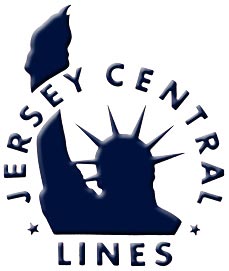 The Central Railroad of New Jersey, also known as the Jersey Central or Jersey Central Lines (reporting mark CNJ), was a Class I railroad with origins in the 1830s. It was absorbed into Conrail in April 1976 along with several other prominent bankrupt railroads of the northeastern United States.
The Central Railroad of New Jersey, also known as the Jersey Central or Jersey Central Lines (reporting mark CNJ), was a Class I railroad with origins in the 1830s. It was absorbed into Conrail in April 1976 along with several other prominent bankrupt railroads of the northeastern United States.
The Elizabethtown and Somerville Railroad was chartered on February 9, 1831, to build from Elizabeth on the Newark Bay (with a steamboat transfer to New York City) west to Somerville. The line to Plainfield was completed in March 1839, connecting to the New Jersey Rail Road in Elizabeth. Extensions took it west to Dunellen in 1840, just east of Bound Brook in 1841 and to Somerville in 1842.
The Somerville and Easton Railroad was chartered on February 26, 1847, to continue the line west to Easton, Pennsylvania. The first extension, to Whitehouse, opened in 1848 and was leased to the Elizabethtown and Somerville Railroad. On February 11, 1849, the Elizabethtown and Somerville Railroad bought the Somerville and Easton Railroad, and on February 26 the two companies were consolidated as the Central Railroad of New Jersey.

The Elizabethtown and Somerville Railroad was chartered on February 9, 1831, to build from Elizabeth on the Newark Bay (with a steamboat transfer to New York City) west to Somerville. The line to Plainfield was completed in March 1839, connecting to the New Jersey Rail Road in Elizabeth. Extensions took it west to Dunellen in 1840, just east of Bound Brook in 1841 and to Somerville in 1842.
The Somerville and Easton Railroad was chartered on February 26, 1847, to continue the line west to Easton, Pennsylvania. The first extension, to Whitehouse, opened in 1848 and was leased to the Elizabethtown and Somerville Railroad. On February 11, 1849, the Elizabethtown and Somerville Railroad bought the Somerville and Easton Railroad, and on February 26 the two companies were consolidated as the Central Railroad of New Jersey.
Brand/Importer Information: On May 1, 1961, Bowser was purchased by Lewis and Shirlee English and moved from Redlands, CA to their basement in Muncy, PA. The original Bowser Manufacturing Co first advertised in the model railroad magazines in November 1948. At that time, the company had only one (HO Scale) engine, the Mountain, which had a cast brass boiler that is no longer available. It was sometime later that Bowser (Redlands) developed the NYC K-11 and the UP Challenger. The molds were made by K. Wenzlaff who introduced himself at the MRIA Show in Pasadena, CA in 1985 These two locomotives are still current production.
Bowser entered into N Scale in 1998 with their acquisition of the Delaware Valley Car Company, a manufacturer of N scale freight cars.
Bowser entered into N Scale in 1998 with their acquisition of the Delaware Valley Car Company, a manufacturer of N scale freight cars.
Item created by: Lethe on 2015-10-02 10:12:28. Last edited by Lethe on 2020-05-07 00:00:00
If you see errors or missing data in this entry, please feel free to log in and edit it. Anyone with a Gmail account can log in instantly.
If you see errors or missing data in this entry, please feel free to log in and edit it. Anyone with a Gmail account can log in instantly.


